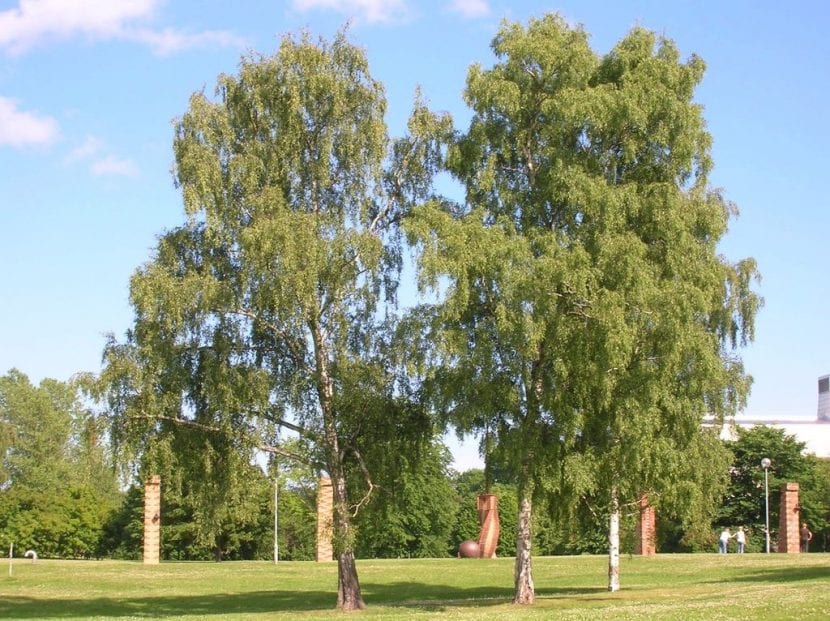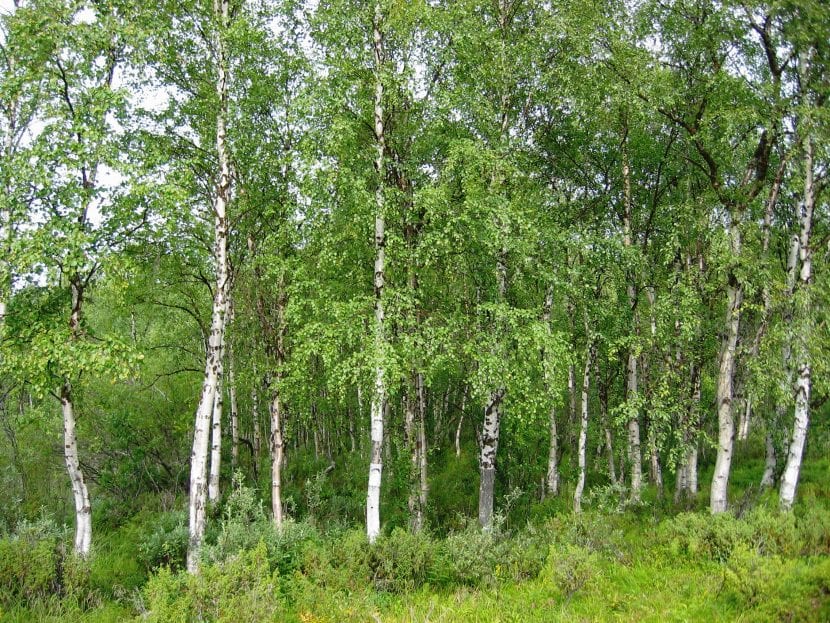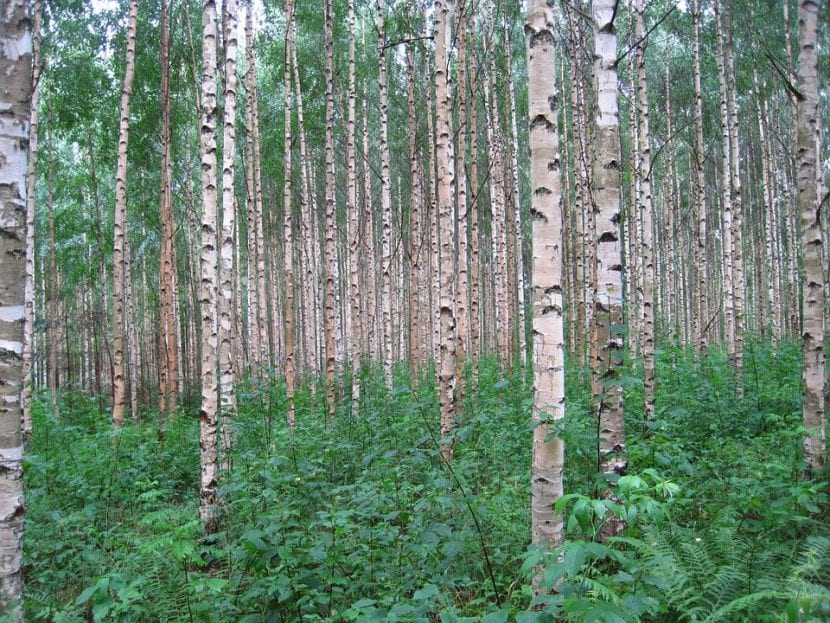
When you want to have a garden in a temperate region, it is important to look for plants that are able to withstand frost. But if we also want them to grow fast, we cannot rule out Betula pendula, a tree that, despite the height it reaches, is not a species that takes up much space.
As if that were not enough, it turns beautiful in the fall, and it is quite easy to care for. So, Do we know it? : )
Origin and characteristics

Our protagonist, whose scientific name is Betula pendula, is a deciduous tree native to Eurasia and North Africa, which develops at an altitude of 0 to 2000 meters above sea level, although it prefers the high regions. It is popularly known as common birch, pendulum birch, weeping birch, European birch, or warty birch.
It can reach a height of up to 30 meters, with a trunk up to 50 centimeters thick, with whitish bark with black markings. The leaves are rhomboidal or ovadoromboidal, light green, and 4-6cm long by 2-4cm wide.
The flowers are grouped in unisexual catkins: the male ones are pendulous and the female ones are somewhat shorter. The fruit is a winged achene, which is found in a cylindrical shaped fruit.
Their life expectancy is about 120 years.
What are their cares?

If you want to have a copy, we recommend that you provide it with the following care:
Location
The common birch must be outside, in full sun or in semi-shade. Its root system is extensive, so it has to be planted at a minimum distance of 10 meters from pipes, walls, etc. to avoid any problem.
Earth
- Garden: grows in soils that are always -or almost always- moist. It is not aquatic; In other words, it does not like waterlogged land, but if we want it to have a good development it will be advisable that the land is fresh, light and has good drainage. In addition, it must be fertile and slightly acidic (pH 5 to 6).
- Flower pot: It is not a plant to have in a pot, not during its entire life. Anyway, it can be grown in one with a substrate for acidic plants (you will find it for sale here).
Irrigation
By not withstanding the drought it is important to water it oftenespecially during the hottest and driest time of the year. But be careful, so that there are no problems, it is advisable to check the humidity of the soil before, for example using a digital humidity meter or a thin wooden stick, since if it is watered excessively the roots will rot and the plant will start to rot. to lose.
In this way, little by little we will realize that we will have to water an average of 4 times a week in summer, and an average of 2 times a week the rest.
Subscriber
From early spring to late summer We will fertilize the weeping birch with Organic fertilizers as guano, manure or others once a month. If we have it in a pot, we will use liquid fertilizers so as not to interfere with the drainage.
Multiplication

Image - Wikimedia / Percita
El Betula pendula multiplies by seeds in winter and semi-woody cuttings in summer. Let's see how to proceed in each case:
Seeds
- The first thing to do is fill a tupperware with vermiculite previously moistened with water.
- The seeds are then sown and covered with a layer of damp vermiculite.
- Afterwards, sprinkle with copper or sulfur to prevent the appearance of fungus, and cover the tupperware.
- It is then placed in the fridge (in the section for sausages, milk, etc.) for three months.
- Once a week the tupperware is removed and opened to renew the air.
- In spring, the seeds are sown in pots with substrate for acid plants.
Thus, they will germinate throughout the spring season.
Cuttings
An easier and faster way to get new specimens is multiplying it with semi-woody cuttings with leaves in summer. For this, pieces of about 30-35cm are cut, their bases are impregnated with homemade rooting agents and planted in pots with vermiculite placed in semi-shade.
In this way, they will root in a maximum of one month.
Pruning
It's not necesary. Maybe remove only dry, diseased or weak branches in late winter, but that's it.
Rusticity
El Betula pendula it resists well frosts down to -20ºC, but not so temperatures that exceed 30ºC. It also cannot live in tropical climates.
What uses does it have?

- Ornamental: it is a very decorative tree, which draws a lot of attention, especially due to the color of its bark. Either as an isolated specimen or in groups or alignments, it is a plant that is truly spectacular in any corner.
- Medicinal:
- Essential oil: it is analgesic, anti-inflammatory, antiseptic, antipyretic and healing.
- Bark: it is astringent.
- Sap: it is diuretic and analgesic.
What did you think of the common birch? If you are lucky enough to have it in your garden, surely you are going to enjoy it a lot 🙂.